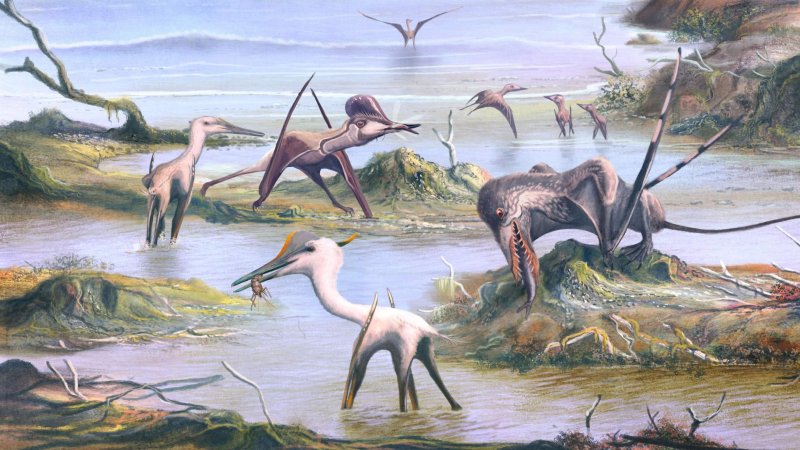Eddie Gonzales Jr. – MessageToEagle.com – A new study sheds light on the diets and behaviors of Earth’s earliest flying reptiles.
Researchers at the University of Leicester’s Centre for Palaeobiology Research and the University of Birmingham analyzed the wear patterns still visible on the teeth of 17 different species of pterosaur, and compared them with similar patterns on the teeth of modern reptiles, including monitor lizards and crocodilians, where much more is known about their diet.
The new technique can be used to learn what these ancient animals ate but also give us ideas about their lifestyles and evolution.
“Most existing ideas about what pterosaurs ate come from comparisons of the shapes of their teeth with those of living animals,” lead author Dr Jordan Bestwick, of the University of Birmingham’s School of Geography, Earth and Environmental Sciences said in a press release.
“For example, if the animal had conical teeth like a crocodile, we might assume it ate fish. But this approach has obvious shortcomings – the teeth of pandas and polar bears, for example, are similar, but comparing them wouldn’t give us an accurate picture of their diets.”
The analysis showed that modern reptiles with rougher wear on their tooth surfaces are more likely to have eaten crunchy things, such as shelled invertebrates – beetles or crabs – whereas reptiles which eat mainly soft items, such as fish, have smoother tooth surfaces.
“Our analysis has yielded some fascinating insights into individual species, but also into some of the bigger questions around how these pterosaurs evolved and whether their lifestyles were more similar to those of modern day birds or reptiles. Evidence from dental microwear analysis can shed new light on this debate,” Dr Bestwick said.
Professor Mark Purnell, Professor of Palaeobiology at the University of Leicester said: “This is the first time this technique has been applied in this way to ancient reptiles, and it’s great to find it works so well.
The team also investigated whether their analysis could shed light on how different species of pterosaurs evolved.
Pterosaurs lived between 210 and 66 million years ago, eventually dying out at the same time as dinosaurs. In that time, according to the dental microwear analysis, there was a general shift in diet from invertebrates such as insects, towards more meat or fish-based diet.
“We found that the earliest forms of pterosaurs ate mainly crunchy invertebrates,” says Dr Bestwick. “The shift towards eating fish or meat coincides with the evolution of birds. We think it’s possible, therefore, that competition with birds could explain the decline of smaller-bodied pterosaurs and a rise in larger, carnivorous species.”
Written by Eddie Gonzales Jr. – MessageToEagle.com Staff







